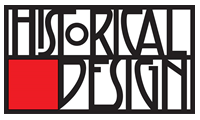Product Description
Bernhard Amster Austrian Silver “Winged Heart” Covered Box c.1910


BERNHARD AMSTER (active Vienna early 20th century) Austria JEWELER, GOLDSMITH AND SILVERSMITH
“Winged Heart” Covered Box c. 1910
Handwrought and hand-hammered silver in a half oval form on four cylindrical feet with heart-shaped finial inset with bone and stylized silver feathers
Marked: BA (in a rectangle 2x), Austrian touchmark for 800 silver (in a pentagon 2x)
For more information see: Blühender Jugendstil – Österreich (Art Nouveau in Blossom – Austria), Firmen und Marken (Companies and Marks), Waltraud Neuwirth, II (Vienna: Selbstverlag Neuwirth, 1991)
H: 4 1/2″ x W: 6 1/2″ x D: 4 3/4″
Price: $5,750
Bernhard Amster Austrian Silver “Winged Heart” Covered Box c.1910
PIERRE BOUCHER (1908-2000) France
Propeller 1935
Signed: WB – 7252; Photo Pierre Boucher (ink stamp); DBoucher (ink signature)
Provenance: Gene Prakapas Gallery, New York, 1978.
H: 7 1/16” x W: 9 ¼” (unframed)
H: 14 11/16” x 16 11/16” (framed)
Pierre Boucher came to photography as a result of the Nouvelle Vision and he explored photography as an experiment on all levels, photograms, collages, solarization and superimposition. He had a natural curiosity and a cultivated and sporty demeanor that led him to produce work as diverse as surrealist nudes and well-constructed advertisements. Whether it be in documentary photography or industrial photography, Pierre Boucher always awakens an empathy and a feeling of closeness with his subjects in the spectator.
Pierre Boucher got his start in advertising, taking his inspiration from the graphic techniques of the modernists in the field and contributing to the transformation of the advertising photo into a work of art. He used photomontage to make his work more striking and effective, making unnerving and astonishing.
Boucher’s nudes, on the other hand, use no technical prowess whatsoever. After the war the movement for freedom of the body led him to reconsider social models. Pierre Boucher revisited the female and male nude from several angles. Around 1931, he did his first nude photos under the umbrella of the “ New Objectivity ” : the image was boxed, the frame strict, the bodies freed from their faces. From 1933 onwards his nudes became surrealist inspired by the work of Man Ray. He then moved on to neo-classical nudes. In studio or in natural light his Apollonian nude aimed above all for beauty and harmony.
